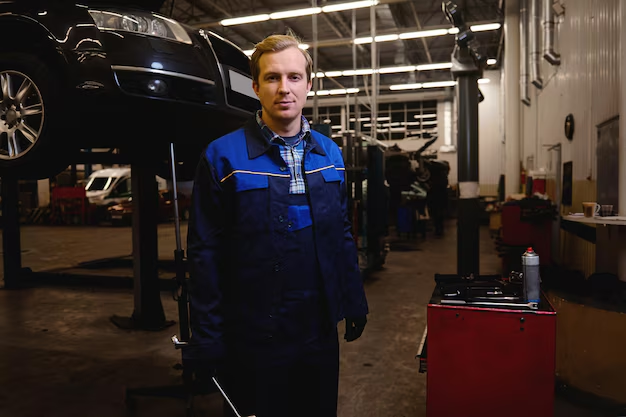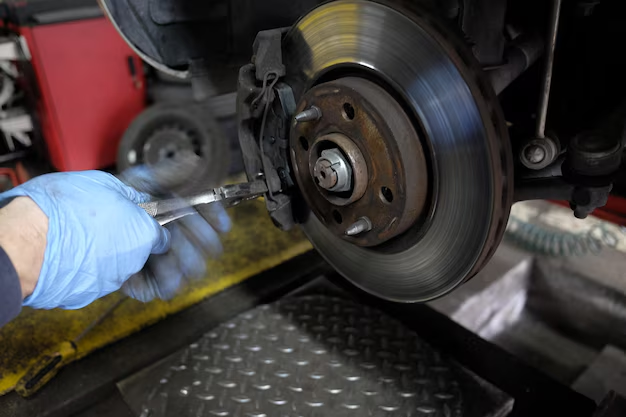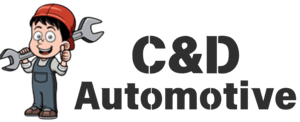If there’s one system on your vehicle you don’t want to take for granted, it’s your brakes. Whether you’re rolling down I-35 or making a quick stop on Camp Bowie, your brakes are your first and most important line of defense.
Brake problems often sneak up quietly—until they don’t. That sudden squeal or soft pedal might seem minor now, but left unchecked, it can become a dangerous (and expensive) situation. Catching brake issues early is the key to keeping your ride safe, your wallet happy, and your trips through Fort Worth stress-free.
At C&D Automotive, we’ve seen just about every brake problem there is. With over 40 years of experience, we know what early warning signs to look for—and we’re here to help you do the same.
Let’s break it down.

The Most Common Early Brake Warning Signs
You don’t need to be a mechanic to spot the early signs of brake trouble. Your car is pretty good at telling you something’s wrong—you just have to know how to listen.
Here’s what to watch (and listen) for:
Squealing or Screeching Sounds
That high-pitched squeal when you hit the brakes? It’s not just annoying—it’s intentional. Most brake pads are designed with a small metal indicator that makes noise when the pads are worn down. It’s your car’s way of saying, “Hey, it’s time for new brake pads.”
Grinding Noise
A grinding sound when braking could mean your brake pads are completely worn out, and metal is grinding against metal. This can damage your rotors—turning a simple brake pad replacement into a more expensive repair.
Vibrations or Shaking When Braking
If your steering wheel or brake pedal shakes when you slow down, it might be due to warped rotors. Rotors are the large discs your brake pads clamp onto, and they need to be smooth for even braking. Warped rotors often result from excessive heat or wear and tear.
A Soft or Spongy Brake Pedal
When your brake pedal feels soft or goes to the floor too easily, that’s a red flag. This could indicate air in the brake lines, a brake fluid leak, or issues with the master cylinder.
Brake Warning Light Is On
If that little red or yellow brake warning light is glowing on your dashboard, don’t ignore it. It could be a simple reminder for maintenance, or it could be warning you of low brake fluid or a more serious system issue.
Why Early Brake Repair Matters
You might be tempted to ignore that squeak for a few more weeks or hope that pedal gets firmer on its own. But when it comes to brake maintenance, sooner is always better.
Here’s why:
- Safety First: Worn brakes increase your stopping distance, especially in emergencies or wet weather. Delaying brake repair puts you—and everyone on the road—at risk.
- Cost Savings: Replacing brake pads is relatively affordable. But wait too long, and you could end up needing new rotors, calipers, or even a full brake system replacement.
- Prevent Bigger Problems: A small fluid leak today could become a complete system failure tomorrow. Early detection keeps minor issues from spiraling into major ones.
What Causes Brake Problems?
Several factors contribute to brake issues, and understanding them helps you stay ahead of trouble.
- Driving Habits: Do you ride the brakes or make frequent hard stops? That wears them out faster. Gentle, consistent braking extends brake life.
- Heavy Loads: Carrying heavy cargo or towing puts extra strain on your brakes, making regular inspections even more important.
- City vs. Highway Driving: Stop-and-go city driving wears out brakes quicker than steady highway cruising. Fort Worth drivers who deal with traffic know this all too well.
Moisture and Rust: If your vehicle sits for long periods, especially in damp weather, rust can build up on the rotors, leading to poor braking performance.

The Importance of Routine Brake Maintenance
Even if your brakes seem fine, regular brake maintenance is one of the smartest things you can do for your vehicle. At C&D Automotive, we recommend a professional brake inspection at least once a year—or every 12,000 miles, whichever comes first.
During a brake check, a certified technician will:
- Inspect brake pad thickness
- Check rotor condition and thickness
- Look for leaks in the brake lines
- Test brake fluid quality and levels
- Assess calipers, hoses, and master cylinder function
Routine inspections help us catch issues early and keep your braking system in top condition.
When to Get Brake Service in Fort Worth
If you’ve noticed any of the symptoms mentioned earlier—or if you just haven’t had your brakes looked at in a while—it’s a smart move to schedule a checkup.
At C&D Automotive, we offer expert brake repair and brake maintenance backed by decades of experience and diagnostic precision. We don’t just throw parts at a problem. Our team uses advanced diagnostic tools to pinpoint the issue, so you get the right fix the first time.
Whether it’s time for new pads, resurfaced rotors, or just a safety check before your next road trip, we’ve got you covered.
What to Expect from a Professional Brake Repair
Many drivers aren’t sure what happens during brake service, so let’s walk through it. A typical brake repair may include:
- Brake Pad Replacement: Swapping out worn pads for new ones to restore stopping power.
- Rotor Resurfacing or Replacement: Smoothing or replacing rotors ensures even contact with new pads.
- Brake Fluid Exchange: Old fluid can become contaminated, reducing braking efficiency. Flushing and replacing it keeps things sharp.
- Hardware Replacement: Springs, pins, and clips may wear out too and need replacement.
- Brake Caliper Inspection or Service: Calipers that stick or seize can lead to uneven wear and reduced braking power.
We never push unnecessary work—only what your car needs to stay safe.
How to Keep Your Brakes in Top Shape
The best way to avoid brake problems? Be proactive.
Here are a few habits to keep your brakes in great condition:
- Avoid Hard Braking: Slow and steady wins the wear-and-tear race.
- Downshift When Possible: If you drive a manual or semi-automatic, use engine braking to reduce strain on your brakes.
- Maintain Proper Tire Pressure: Underinflated tires make your brakes work harder.
- Get Regular Inspections: Even if things feel okay, professional eyes can spot early signs of trouble.
- Pay Attention to Sounds: Squeaks, grinds, and clunks are your car’s way of saying, “Take me to C&D.”
When your brakes are working properly, you barely notice them. But when they’re not, it can turn every green light into a moment of anxiety. Don’t wait for that moment.
If you’re experiencing any signs of brake problems—or it’s just time for your routine brake maintenance—schedule your service with C&D Automotive in Fort Worth today. Our transparent, customer-first approach means no upsells, no pressure—just quality brake repair from a team that’s been trusted for over 40 years. Let us keep you safe on the road, one stop at a time.
